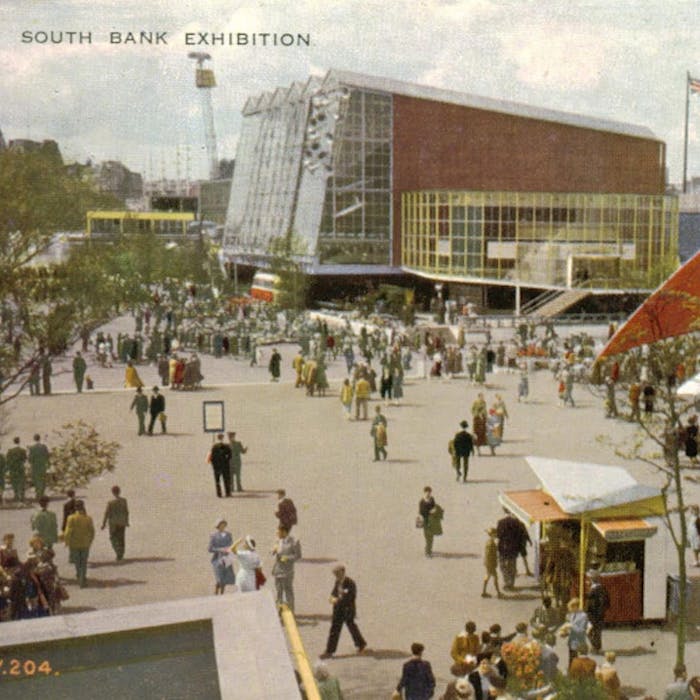
Festival of Britain 1951 - national celebration on the South Bank
The Festival of Britain in 1951 was designed to celebrate the nation's industry, arts and science, and promote a feeling of recovery following the aftershock of the Second World War. Held on a 27-acre former industrial site on London's South Bank, the Festival opened on the centenary - almost to the day - of the 1851 Great Exhibition.
Designed as a temporary exhibition, it ran for 5 months before closing in September 1951, but the Festival Hall remains as an iconic South Bank building.
The South Bank had been left virtually untouched since being bombed in the War. In keeping with the Festival's principles, 38-year-old architect, Hugh Casson, was appointed Director of Architecture for the project. His work proved pivotal in showcasing urban designs and furnishing styles that would feature heavily in the post-War rebuilding of London, and other towns and cities.
The main site featured the largest dome in the world at the time, standing 93 feet tall with a diameter of 365 feet. It held exhibitions on the theme of discovery, such as the New World, the Polar regions, the Sea, the Sky and Outer Space. Adjacent to the Dome was the Skylon, a futuristic-looking structure, supported by cables to give the impression it was floating above the ground.
Another feature was the Telekinema, a 400-seat cinema operated by the British Film Institute. This proved to be one of the most popular attractions at the South Bank site. Following the Festival's closure, the Telekinema became home to the National Film Theatre. It was not demolished until 1957, when the National Film Theatre moved to the adjacent site it still occupies at the South Bank Centre.
The Royal Festival Hall, a 2,900 seat concert hall, was designed by architects Robert Matthew and Leslie Martin, with interior furnishings by other leading designers, including Robin Day. This still survives in the recently refurbished building.
The Festival also featured a new wing of the Science Museum in South Kensington, displaying the Exhibition of Science; and The Exhibition of Live Architecture at Poplar. The latter had a disappointing response, with only 10% of guests to the main exhibition visiting it. Upriver, only a few minutes via boat from the main Festival site, was Battersea Park, which was home to the funfair part of the Festival.
The Festival met with some controversy - with critics believing the money would have been better spent on developing new housing - and artistically, much of the festival was criticised for its futuristic focus. It was also accused by some of charging overpriced admission fees. Nevertheless, the main Festival site on the South Bank attracted over 8 million paying visitors, turning over a profit.
Further reading
Links to external websites are not maintained by Bite Sized Britain. They are provided to give users access to additional information. Bite Sized Britain is not responsible for the content of these external websites.
